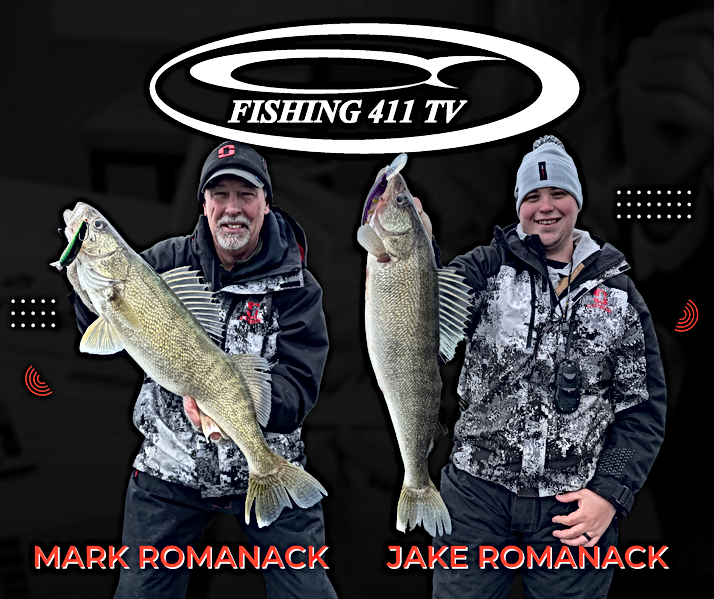Based on the number of e-mails and other communications I’m getting about the DeTour Passage Atlantic Salmon show that aired recently, it appears guys are more than a little interested in this fishery. The good news is that the DeTour Passage fishery is largely overlooked and has great potential. The bad news is that collectively the number of Atlantic salmon that are raised and released into Lake Huron and the St. Mary’s River is modest enough that these impressive fish are not likely to become the next big thing in Great Lakes fishing.

Brightly colored spoons like this Orange Chilly Willy by Wolverine Tackle proved to be the most productive color patterns for targeting Atlantic salmon at DeTour Passage.
Currently the stocking efforts for Atlantic salmon include about 30,000 to 35,000 fish from the Lake Superior State University Aquatic Research Lab that are stocked in the St. Mary’s River. Another 100,000 Atlantic salmon raised by the Michigan DNR that are stocked “Johnny Appleseed Style” at several Lake Huron ports.
The St. Mary’s River is getting the largest plants and is enjoying the most consistent returns. Thankfully the Atlantic salmon planted by both the Michigan DNR and the Aquatic Research Lab are fin clipped so it is easy to tell who stocked the fish and in what year the fish were released. As these fish are captured and this critical information becomes digested, biologists and fishermen alike are better able to predict when and where the best fishing will occur.

The best catches of Atlantic salmon planted by the DNR are turning up in southern Lake Huron in the early spring. Salmon and other salmonids often migrate to the southern end of Lake Huron where slightly warmer and more nutrient rich waters attract the greatest concentrations of bait fish.
The fishing action starts as soon as anglers can get out in the spring and extends well into May. Once the water of southern Lake Huron begins to warm, Atlantic salmon start a northward migration that is difficult or impossible to predict. These fish often show up in a particular port for a day or two before disappearing again as they migrate north.
Many anglers believe that the most consistent port for Atlantic salmon on the Lake Huron coast is Alpena. Local charter captains such as Ed Rutherford who have fished Lake Huron for over 40 years feels it’s the structure in Alpena that holds Atlantic salmon.
“When Atlantic salmon are around we target them early in the mornings and around near shore structure,” says veteran Great Lakes Captain Ed Rutherford. “Once we catch a few Atlantic salmon and the action slows, we move off shore to target lake trout. “The month of June is when we enjoy the best catches of Atlantic salmon in the Alpena area.”

The fish that run the St. Mary’s River tend to start staging in Lake Huron near the DeTour Passage in late May. The entire month of June and much of July anglers can find catchable numbers of Atlantic salmon in the lower St. Mary’s River.
When the Fishing 411 TV crew visited the DeTour Passage it was the second week of June and fishing ranged from tough to excellent. “At times it seemed we could barely scratch out a few bites,” says TV host Jake Romanack. “At other times, the fishing was fantastic and we enjoyed steady action all day long.”
It seems the “on again and off again” nature of the Atlantic salmon is consistent with what anglers experience everywhere this species is found. Unlike king and coho salmon that are eating machines, Atlantic salmon enjoy a much more varied diet and for whatever reason they seem to be harder to catch than their Pacific salmon relatives.
While Atlantic salmon are indeed salmon, they are more closely related to brown trout than Pacific salmon. Some anglers even struggle to tell Atlantic salmon from brown trout. The one distinguished feature to pay attention to are the spots on the flank of the fish. The Atlantic salmon only has spots on the top half of the flank while the spots on brown trout range all across the body of the fish.
Because Atlantic salmon will tolerate warmer water than Pacific salmon and lake trout, Atlantics are often found higher in the water column. On our DeTour Passage adventure we consistently caught fish on our 3, 5 and 7 color lead core rigs. Our best downrigger depths were 20-30 feet down and we even caught fish on divers set just 25 feet behind the boat!

Most of the Atlantic salmon we discovered at DeTour Passage were found in the top 40 feet of the water column.
Anglers use a large variety of baits to target Atlantic salmon, but during our stay it was the Wolverine Tackle Mini Streak spoon that did the majority of the damage. We also caught a few fish on Standard sized Streak Spoons.
